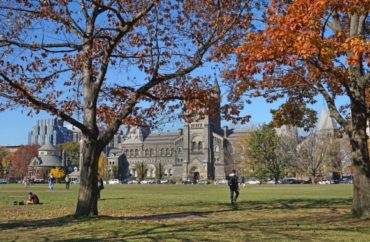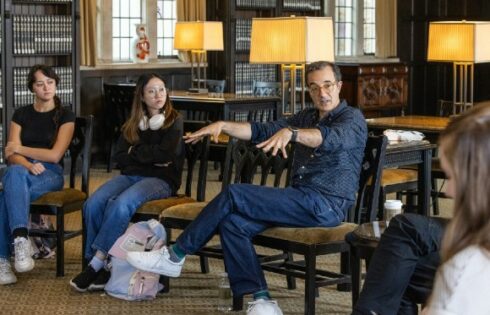
David Randall | Minding the Campus
Tradition-minded education reformers who wish to pass on to our children attachment to the ideals and institutions of the American republic and nation need to create new programs and schools independent of the existing far-left monoculture in academia. One way to go about this is to build up a network of autonomous Centers, such as ones established in states like Arizona, Florida, and Ohio. Another way is to set up an equally autonomous School of General Studies, responsible for teaching all courses that qualify for General Education Requirements. Any initiative should work to train an ever-increasing number of tradition-minded professors so as to staff existing Centers and Schools and be ready to staff new ones.
Building up a corps of tradition-minded professors in the humanities and social sciences who can teach the history and the ideals of Western civilization and of America must be priority number one. The far-left education establishment has pushed dissenters out of academia for generations, and America—the entire West—is desperately short of such professors. We need more tradition-minded students and more tradition-minded K-12 teachers, but our worst bottleneck is the lack of professors. We must produce as many as possible, as quickly as possible.
Graduate students generally spend at least five years in their studies and must conduct substantial amounts of original research. In most of the humanities and social sciences, this research takes the form of a dissertation—most of the material needed for a book. Graduate students generally forego substantial amounts of income—indeed, they postpone the actual start of their careers. Nevertheless, universities have to subsidize PhD students—it can take $250,000 to support one student for five years of study.
Ever fewer PhDs actually get tenure-track jobs. Nevertheless, although large numbers of undergraduate teaching positions are filled by graduate students or adjunct PhDs scrambling to secure a living wage, the expectation remains—although less in the sciences—that tenure-track professors do the undergraduate teaching. Each university PhD requires a substantial investment of time and money, both by the institution and by the PhD aspirant. Professors are the bottleneck in education reform because they are so expensive and time-consuming to produce.
Tradition-minded professors are even scarcer than professors in general. The way academia is now structured, we require tradition-minded young Americans to spend five-plus years acquiring a PhD, unlikely to get university support during their education or to secure a job after graduation unless they hide their beliefs. Few engage in that gamble. Indeed, there are so few left that even the handful of new Centers have trouble finding enough tradition-minded professors to staff them.
If these scarce tradition-minded professors do get jobs at a tradition-minded institution, we must decide how to allot their teaching assignments. We must make intelligent choices about how to use the few existing tradition-minded PhDs to accomplish the goal of lasting education reform.
The most effective use of their time would be to focus on graduate education—above all, to train the aspiring PhDs, but also to train the MAs who will become K-12 teachers and principals. But these professors must also devote considerable time to undergraduate education. Undergraduates ought to have an education free of the radical monoculture—and we need a supply of properly educated undergraduates to provide an intake of new tradition-minded aspirants to graduate education. Even though it is a very inefficient use of our terribly scarce PhDs, we need to divert them from graduate education to undergraduate education.
Or so we must do under the current university system, which restricts undergraduate teaching to professors and to graduate students aiming for the PhD. Tradition-minded education reformers need to break out of that system. We need a reform that will allow our few tradition-minded PhDs to focus on graduate education, so as to increase the number of tradition-minded professors as rapidly as possible.
I’ve written elsewhere that academia generally should adopt the PhD by publication—the PhD for a series of published articles rather than a dissertation. The corollary to this reform should be:
Colleges and universities should revise requirements so that the MA and one published article qualifies to teach introductory courses and an additional 2 articles qualifies to teach advanced undergraduate courses. The full PhD, which could be satisfied by 3 further articles, would qualify to teach capstone undergraduate seminars and graduate courses.
All academia would benefit from this, but this reform is essential for tradition-minded institutes that wish to build up the supply of tradition-minded professors. Tradition-minded PhDs could focus on the essential task of graduate education. They also should continue the tradition of academic research, but for at least one generation their own focus must be the training of new colleagues. Tradition-minded graduate students would secure a desirable job teaching undergraduates with less investment of time—and with less investment per student by their sponsoring institutions. With the security of a full-time income, teaching MAs could then proceed gradually to a—better paid—PhD along the PhD by publication track if they so desired. Tradition-minded undergraduates would get a better education from dedicated, career MA teachers than they would from graduate assistants—and probably as good a one as they would get from PhDs.
Say that Ohio State University’s new Salmon P. Chase Center for Civics, Culture, and Society hires five professors to teach classes and offers a PhD by publication track that begins with the immediate option of an MA and one published article leading to the ability to teach undergraduate courses at the Chase Center. In the first few years, the five professors would teach a mixture of undergraduate and graduate classes. But, after three to four years, the first graduating MAs with published articles would be available to start teaching undergraduate classes. The Chase Center’s professors with PhDs would then be able to switch their focus more to teaching graduate classes—to training PhDs both for the Chase Center and for other new institutions.
The new Centers should prioritize ensuring that the articles that qualify for a PhD are of high quality so that they can plausibly argue that one excellent article matters more than a mediocre dissertation. If the Centers also ensure that their graduates are excellent teachers of undergraduates, that teaching excellence will more than answer critiques of any Center’s research reputation.
The switch to PhD by publication and MA-teaching-undergraduates is essential for these new Centers to have the greatest possible effect. This reform will allow these Centers to focus on the highest priority—to educate swiftly a new generation of tradition-minded PhDs and professors.
David Randall is Director of Research at the National Association of Scholars.
This originally appeared March 26 on Minding the Campus.
IMAGE: Spiro Inc. / Shutterstock
Like The College Fix on Facebook / Follow us on Twitter




Add to the Discussion